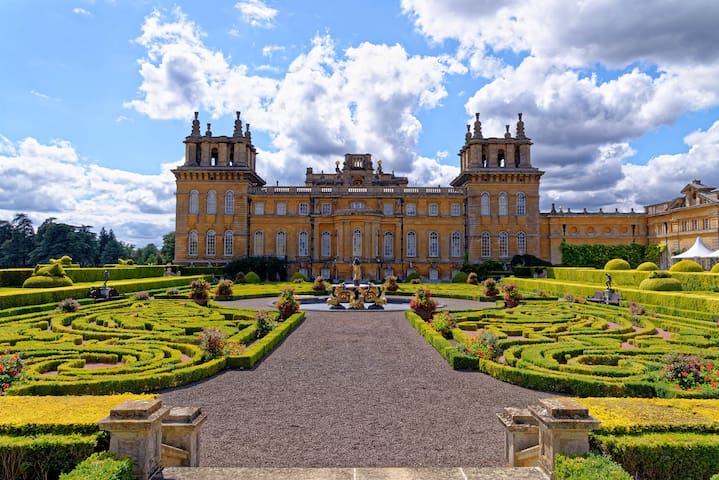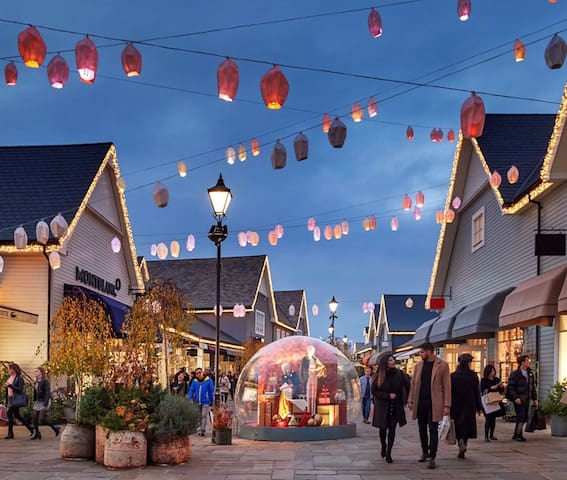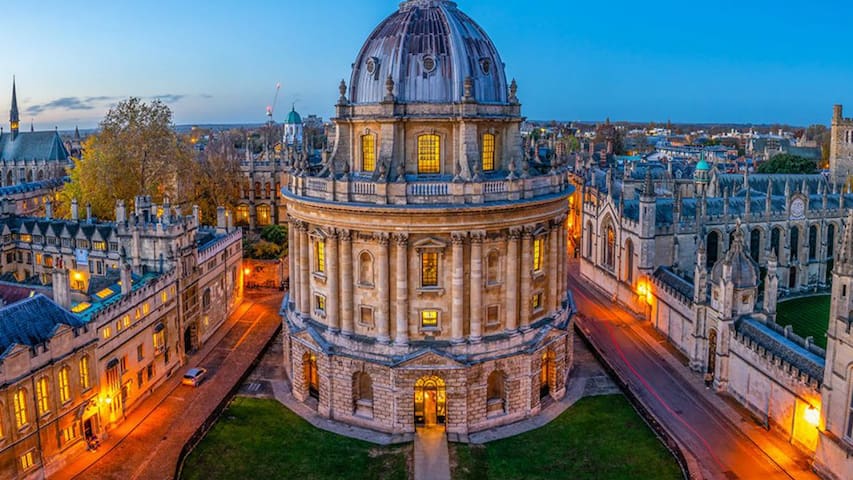Sightseeing
Blenheim Palace is a country house in Woodstock, Oxfordshire, England. It is the seat of the Dukes of Marlborough and the only non-royal, non-episcopal country house in England to hold the title of palace. The palace, one of England's largest houses, was built between 1705 and 1722, and designated a UNESCO World Heritage Site in 1987.
The palace is named after the 1704 Battle of Blenheim, and thus ultimately after Blindheim (also known as Blenheim) in Bavaria. It was originally intended to be a reward to John Churchill, 1st Duke of Marlborough for his military triumphs against the French and Bavarians in the War of the Spanish Succession, culminating in the Battle of Blenheim. The land was given as a gift, and construction began in 1705, with some financial support from Queen Anne. The project soon became the subject of political infighting, with the Crown cancelling further financial support in 1712, Marlborough's three-year voluntary exile to the Continent, the fall from influence of his duchy and lasting damage to the reputation of the architect Sir John Vanbrugh.
Designed in the rare, and short-lived, English Baroque style, architectural appreciation of the palace is as divided today as it was in the 1720s. It is unique in its combined use as a family home, mausoleum and national monument. The palace is notable as the birthplace and ancestral home of Sir Winston Churchill.
Following the palace's completion, it became the home of the Churchill (later Spencer-Churchill) family for the next 300 years, and various members of the family have wrought changes to the interiors, park and gardens. At the end of the 19th century, the palace was saved from ruin by funds gained from the 9th Duke of Marlborough's marriage to American railroad heiress Consuelo Vanderbilt.
Source: Wikipedia
657 personas locales recomiendan
Blenheim Palace
Blenheim Palace is a country house in Woodstock, Oxfordshire, England. It is the seat of the Dukes of Marlborough and the only non-royal, non-episcopal country house in England to hold the title of palace. The palace, one of England's largest houses, was built between 1705 and 1722, and designated a UNESCO World Heritage Site in 1987.
The palace is named after the 1704 Battle of Blenheim, and thus ultimately after Blindheim (also known as Blenheim) in Bavaria. It was originally intended to be a reward to John Churchill, 1st Duke of Marlborough for his military triumphs against the French and Bavarians in the War of the Spanish Succession, culminating in the Battle of Blenheim. The land was given as a gift, and construction began in 1705, with some financial support from Queen Anne. The project soon became the subject of political infighting, with the Crown cancelling further financial support in 1712, Marlborough's three-year voluntary exile to the Continent, the fall from influence of his duchy and lasting damage to the reputation of the architect Sir John Vanbrugh.
Designed in the rare, and short-lived, English Baroque style, architectural appreciation of the palace is as divided today as it was in the 1720s. It is unique in its combined use as a family home, mausoleum and national monument. The palace is notable as the birthplace and ancestral home of Sir Winston Churchill.
Following the palace's completion, it became the home of the Churchill (later Spencer-Churchill) family for the next 300 years, and various members of the family have wrought changes to the interiors, park and gardens. At the end of the 19th century, the palace was saved from ruin by funds gained from the 9th Duke of Marlborough's marriage to American railroad heiress Consuelo Vanderbilt.
Source: Wikipedia
St Mary C Of E Church
88 Church StShopping
Bicester Village is an outlet shopping centre on the outskirts of Bicester, a town in Oxfordshire, England. The centre is the second most visited location in the United Kingdom by Chinese tourists, after Buckingham Palace.
413 personas locales recomiendan
Bicester Village
Bicester Village is an outlet shopping centre on the outskirts of Bicester, a town in Oxfordshire, England. The centre is the second most visited location in the United Kingdom by Chinese tourists, after Buckingham Palace.
City/town information
Oxford, a city in central southern England, revolves around its prestigious university, established in the 12th century.
The architecture of its 39 colleges in the city’s medieval centre led poet Matthew Arnold to nickname it the 'City of Dreaming Spires'. A few of the popular colleges to visit in the Oxford city centre are Christ Church, Magdalen, St John’s, Wadham, Queens, Trinity & Balliol college just to name a few.
Some of the popular tourist attractions are:
Sheldonian Theatre
Ashmolean Museum
Radcliffe Camera
Christ Church College.
Carfax Tower
Oxford Castle & Prison
556 personas locales recomiendan
Oxford
Oxford, a city in central southern England, revolves around its prestigious university, established in the 12th century.
The architecture of its 39 colleges in the city’s medieval centre led poet Matthew Arnold to nickname it the 'City of Dreaming Spires'. A few of the popular colleges to visit in the Oxford city centre are Christ Church, Magdalen, St John’s, Wadham, Queens, Trinity & Balliol college just to name a few.
Some of the popular tourist attractions are:
Sheldonian Theatre
Ashmolean Museum
Radcliffe Camera
Christ Church College.
Carfax Tower
Oxford Castle & Prison
Outdoor / Nature
The Oxford Canal is a 78-mile (126 km) narrow canal in central England linking Oxford with Bedworth. Completed in 1790, it connects to the River Thames at Oxford and is integrated with the Grand Union Canal—combined for 5 miles (8 km) close to the villages of Braunston and Napton-on-the-Hill.
The canal was for about 15 years the main canal artery of trade between the Midlands and London; it retained importance in its local county economies and that of Berkshire. Today the canal is frequently used for weekend and holiday narrowboat pleasure boating.
7 personas locales recomiendan
Oxford Canal
The Oxford Canal is a 78-mile (126 km) narrow canal in central England linking Oxford with Bedworth. Completed in 1790, it connects to the River Thames at Oxford and is integrated with the Grand Union Canal—combined for 5 miles (8 km) close to the villages of Braunston and Napton-on-the-Hill.
The canal was for about 15 years the main canal artery of trade between the Midlands and London; it retained importance in its local county economies and that of Berkshire. Today the canal is frequently used for weekend and holiday narrowboat pleasure boating.




